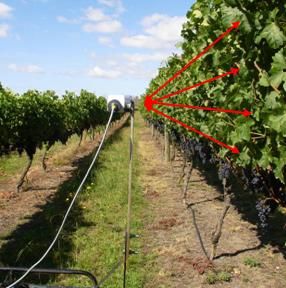Normalised Difference Vegetative Index (NDVI) provides an indication of spectral vegetation within a crop.
Values are high for high photosynthetically active biomass (PAB) and low for low photosynthetically active biomass (PAB).
There are several ways of measuring NDVI in a crop, these include:
Satellite imagery
Satellite imagery gives a spatial resolution of 25m x 25m (625 sq. m)
Localised Airborne NIR cameras
from aircraft the spatial resolution can be reduced (5m x 5m = 25 sq. m)
Reflectance sensors
Using reflectance sensors that are vehicle mounted, a reading can be taken every second, depending on vehicle speed (Typically 10-15km/hr) this indicates an NDVI reading every 2.5 – 3.5m travelled
Spatial Solutions NDVI equipment
We use the Crop Circle ACS-210 sensor which provides classic vegetative index data as well as basic reflectance information from plant canopies. The Crop Circle is not limited by ambient lighting conditions; therefore measurements can be made day or night due to its unique light source technology. For on the go applications we mount the Crop Circle on an ATV to remotely sense and map plant or crop canopy biomass while driving through a field.
The image below shows an NDVI survey of Cabernet Sauvignon vines prior to harvest (2007), the measurement technique is non invasive and is combined with a GPS position every one second to record spatial data that can be plotted to give an indication of the spatial variability of the crop.



